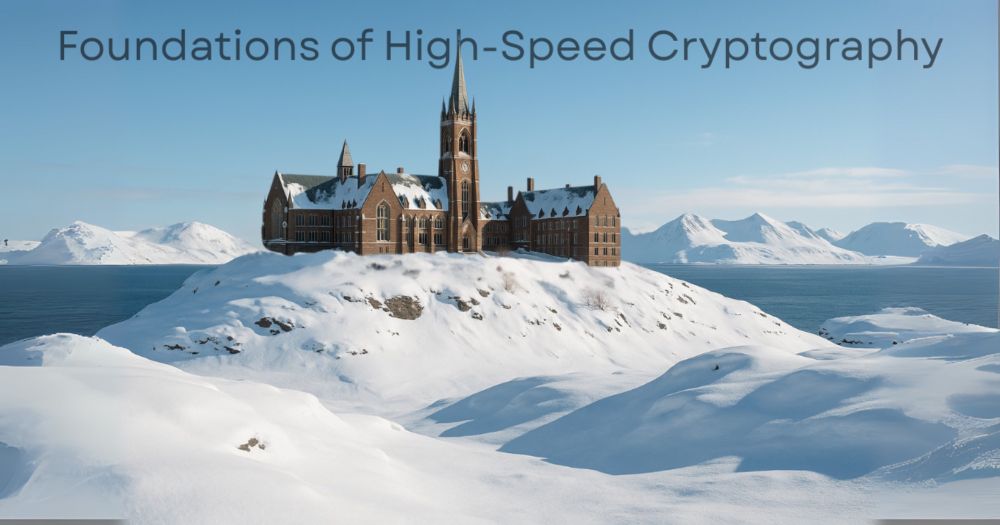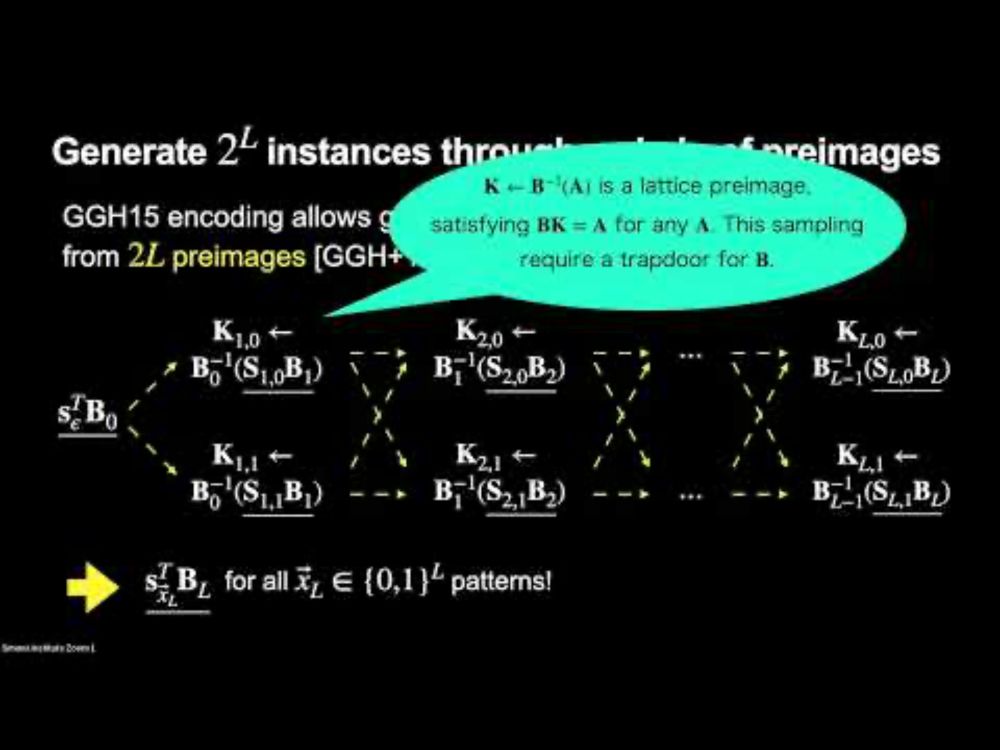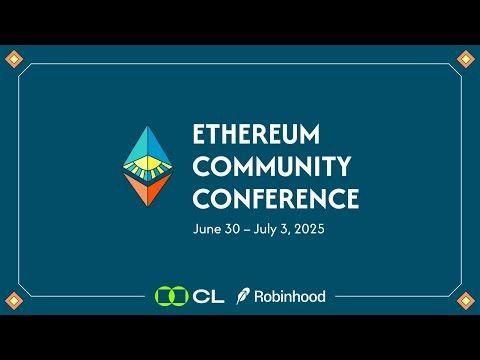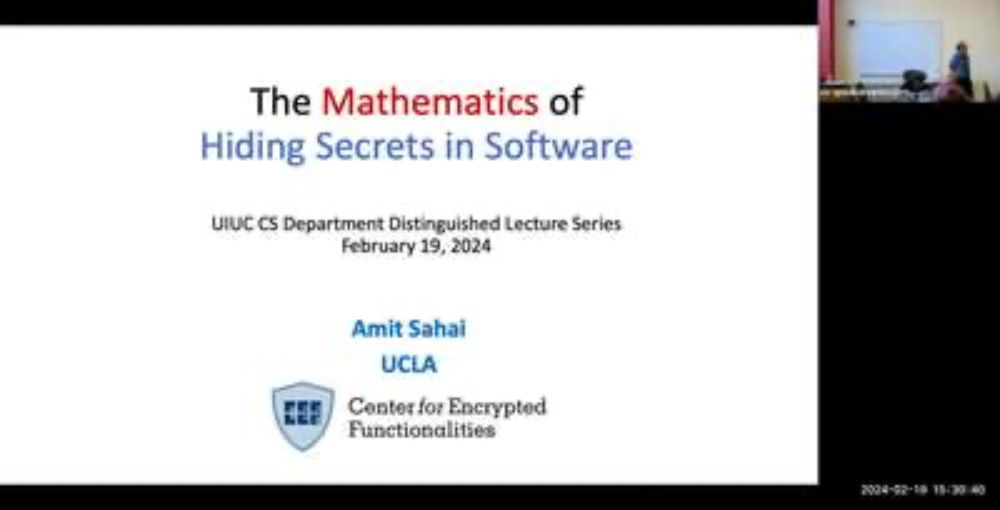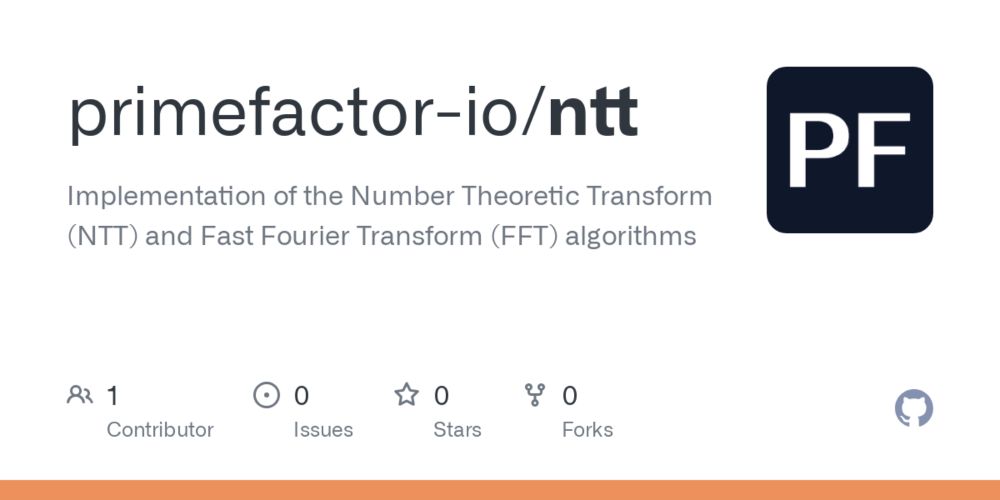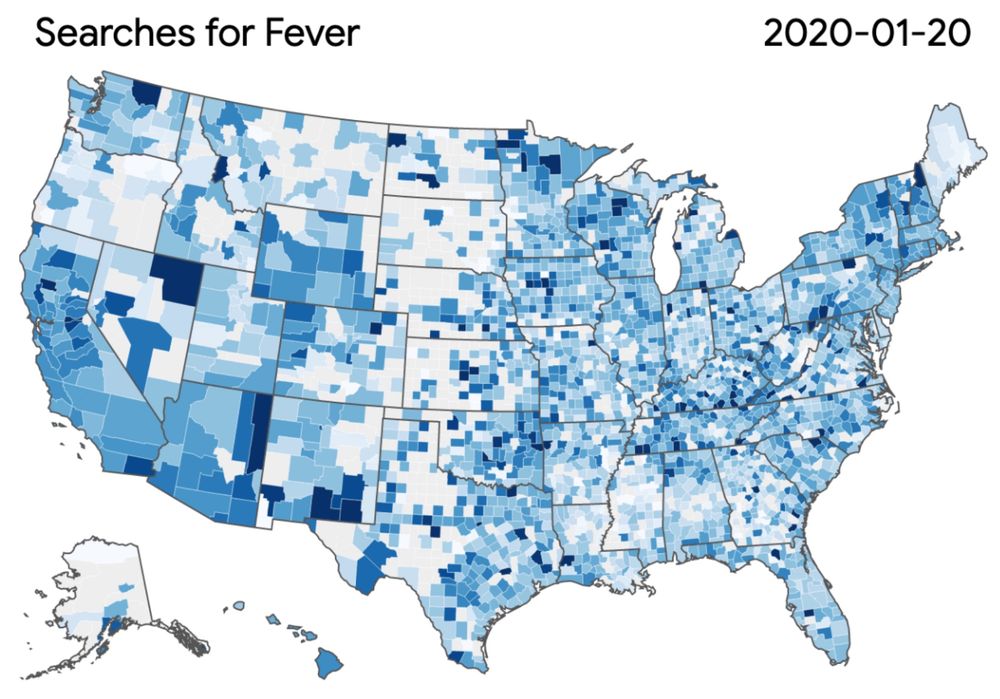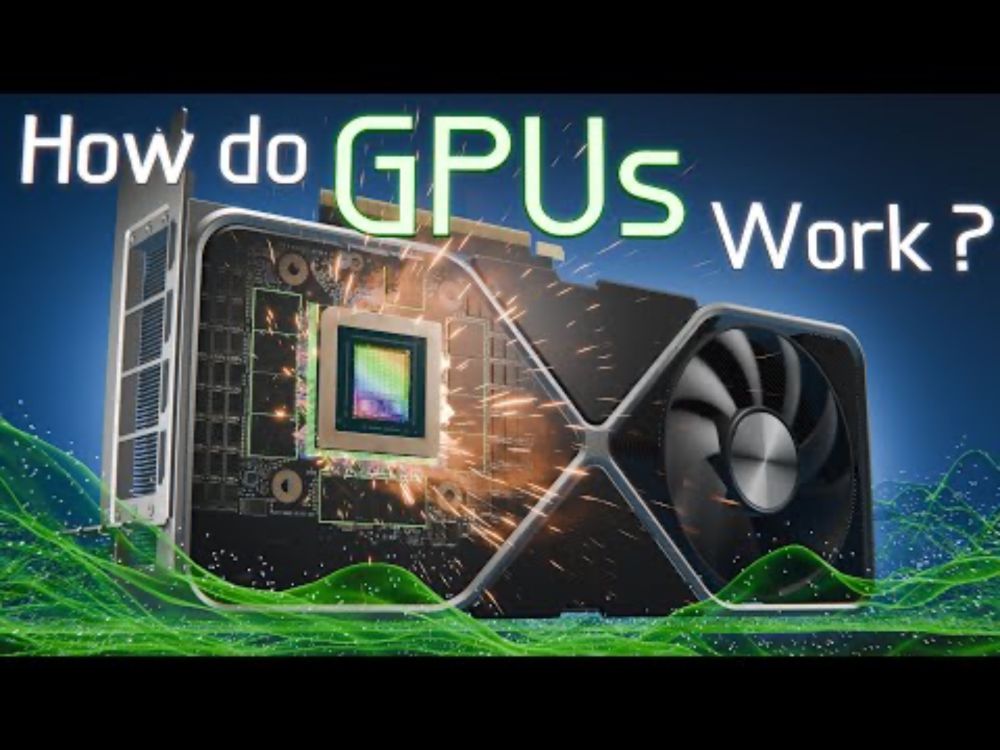How to 𝒫𝔩𝔬𝔫𝒦
Interactive 𝒫𝔩𝔬𝔫𝒦 Zero-Knowledge Proof Tutorial
ZKSecurity just dropped this truly awesome PlonK tutorial: plonk.zksecurity.xyz
06.08.2025 12:40 — 👍 2 🔁 1 💬 0 📌 0

Post-Quantum Readiness in EdDSA Chains
The impending threat posed by large-scale quantum computers necessitates a reevaluation of signature schemes deployed in blockchain protocols. In particular, blockchains relying on ECDSA, such as Bitc...
This is an interesting read on how EdDSA's hash-based key derivation (RFC 8032) can be used to compute PQ-ZKPs for private key ownership proofs: eprint.iacr.org/2025/1368
This is good news as it allows for an easier transition towards Post Quantum secure cryptocurrencies.
29.07.2025 06:29 — 👍 2 🔁 0 💬 0 📌 0
Cryptography and Security
That would be awesome!
For me first thing in the morning is checking the new publications on eprint.iacr.org (also followed arxiv.org/list/cs.CR/recent but there’s too much noise IMHO).
18.07.2025 06:09 — 👍 0 🔁 0 💬 1 📌 0
YouTube video by Simons Institute
Diamond iO: Lattice-Based Obfuscation without Bootstrapping from Functional Encryption, toward...
The recording of the Diamond iO talk by the Machina iO team that was held during the Simon Institute's "Obfuscation" workshop was just uploaded: www.youtube.com/watch?v=1RcK...
09.07.2025 14:07 — 👍 2 🔁 0 💬 0 📌 0
This is a great paper that explains how to obtain indistinguishability obfuscation (iO) via recursive Functional Encryption: piazza.com/class_profil...
It's basically a simplified version of the [BV15] paper: eprint.iacr.org/2015/163
04.07.2025 08:29 — 👍 2 🔁 0 💬 0 📌 0
Machina iO - Blog Post
The Machina iO Team just published a blog post which serves as a great introduction to indistinguishability obfuscation (iO): machina-io.com/posts/unboxi...
02.07.2025 09:12 — 👍 2 🔁 0 💬 0 📌 0
Please keep us posted on how it went!
I’m using asdf and direnv which is an amazing combo IMHO.
I saw mise on HN a while ago and thought about switching to it, but I’m not sure if it’s worth it given the current setup I have.
28.06.2025 14:12 — 👍 1 🔁 0 💬 0 📌 0
YouTube video by Bill Buchanan OBE
World-leaders in Cryptography: Ralph Merkle
What a great episode with the legend Ralph Merkle.
I came for the Cryptography and stayed for the insights into Cryonics and general life lessons.
www.youtube.com/watch?v=90py...
As I wrote before, the Podcast by @billatnapier.bsky.social is an absolute gem if you're interested in Cryptography.
27.06.2025 14:29 — 👍 1 🔁 0 💬 0 📌 0
Turns out there's currently an ongoing "Obfuscation" Workshop / Symposia hosted by the Simons Institute!
simons.berkeley.edu/workshops/ob...
They just uploaded the "Expedition to Obfustopia" video by Rachel Lin which IMHO is the best overview of the SoTA of iO: www.youtube.com/watch?v=2PRU...
27.06.2025 09:05 — 👍 3 🔁 1 💬 0 📌 0
Really looking forward to get this implemented as an alternative to the CUDA FFT / NTT implementations out there.
Thanks to WebGPU it will be cross-platform and can even be compiled to WASM to run in the browser.
26.06.2025 12:47 — 👍 1 🔁 0 💬 0 📌 0
The idea is to use uniform buffers for the pre-computed twiddles (powers of omega / psi).
I had some issues with the address space layout (see comment in the shader code), but was able to fix it after some in-depth troubleshooting.
26.06.2025 12:47 — 👍 1 🔁 0 💬 1 📌 0
Once done, the data in the output buffer is copied into a mapped buffer so I can access it easily on the CPU side (a common pattern in WebGPU programming).
The uniform buffer is an interesting one as it allows one to define read-only "global variables" that are fast to access.
26.06.2025 12:47 — 👍 0 🔁 0 💬 1 📌 0
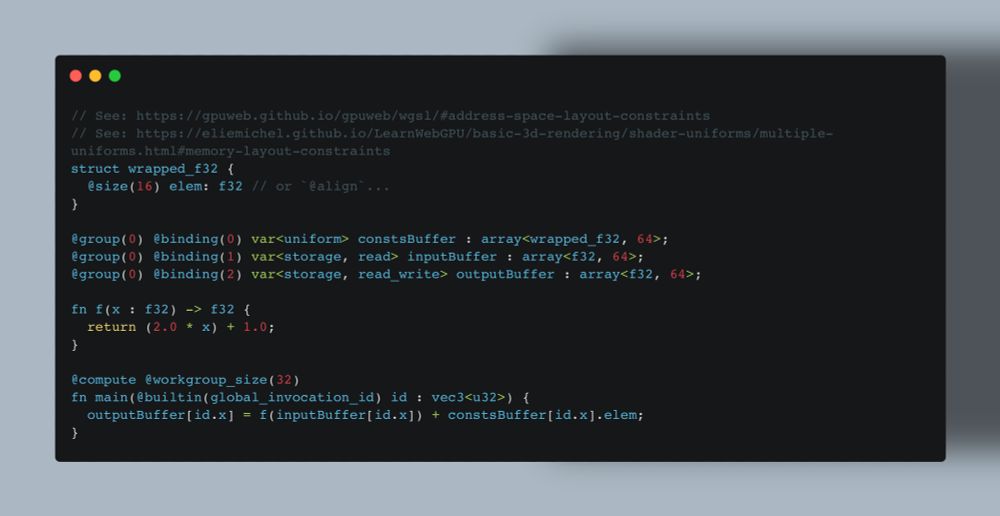
WGSL Shader code.
Right now it's just an e2e demo which does some simple calculations on floats.
However everything is in place so I can start to write shader code for the NTT / FFT.
The shader has 3 buffers in total. Two storage buffers (for input and output) and a uniform buffer for constants.
26.06.2025 12:47 — 👍 1 🔁 0 💬 1 📌 0

Result of running the shader code with WebGPU.
Got a first e2e implementation of a WebGPU Compute Shader up and running.
It's written in Zig and uses WebGPU via the Dawn project so I can run it on my MacBook's M1 GPU.
26.06.2025 12:47 — 👍 2 🔁 0 💬 1 📌 0

Output when running the zig build test command.
Been working hard to make my MacBook's M1 GPU Go Brr and run NTT on it.
~200 lines of Zig later and I got most of the basic plumbing done.
Not sure if the headache comes from my new glasses or the WebGPU API 😅
25.06.2025 13:43 — 👍 1 🔁 0 💬 0 📌 0
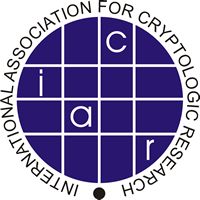
Lattice-based Obfuscation from NTRU and Equivocal LWE
Indistinguishability obfuscation (iO) turns a program unintelligible without altering its functionality and is a powerful cryptographic primitive that captures the power of most known primitives. Rece...
Exactly 👌
The Diamond iO paper is the next thing I’ll dive into.
I started there but got overwhelmed with all the moving parts and decided to study the foundations first. This is where the video helped me a lot.
There’s also eprint.iacr.org/2025/1129 which I plan to look into afterwards.
25.06.2025 11:50 — 👍 1 🔁 0 💬 0 📌 0
MPC Deployments
Nice website that lists MPC Deployments alongside a short writeup and additional resources to dive deeper into the respective deployment: mpc.cs.berkeley.edu
24.06.2025 08:24 — 👍 1 🔁 0 💬 0 📌 0
Thanks's to Zig's comptime we can use this parameter n to generate a type which holds empty arrays of length n that are used for subsequent computations.
No heap allocations are necessary because an array's max size is n.
23.06.2025 09:46 — 👍 0 🔁 0 💬 1 📌 0
Just optimized the NTT / FFT implementation and removed the allocator so that ZERO heap allocations are now performed.
This works because the degree of the cyclotomic polynomial / FFT vector length is a parameter (denoted as n) that's agreed upon in advance (i.e. not dynamic).
23.06.2025 09:46 — 👍 0 🔁 0 💬 1 📌 0
Excited to dive into this new iO paper.
Another interesting construction is "Diamond iO" from the PSE Team: eprint.iacr.org/2025/236
17.06.2025 04:51 — 👍 1 🔁 0 💬 0 📌 0
Really important effort.
Consider donating or becoming a member if you care about privacy and the future of the internet in general.
14.06.2025 06:07 — 👍 0 🔁 0 💬 0 📌 0
YouTube video by Branch Education
How do Graphics Cards Work? Exploring GPU Architecture
Been studying GPU architectures recently and man, this video is absolute gold: youtube.com/watch?v=h9Z4...
The channel in general has stunning animations and explainers on various topics.
13.06.2025 10:57 — 👍 1 🔁 0 💬 0 📌 0
Lecturer @sydney.edu.au @sydneycompsci.bsky.social
Previously Post Doc at @NttResearch, CMU @CyLab. PhD from @UniFAU. Cryptography, Fairness, Blockchain, Cryptocurrency
Webpage: http://aravinda-thyagarajan.com
A next-generation media company positioned at the intersection of emerging technology, alternative finance, and culture.
Founder of codingrobots.com. Created iwl.me, Mémoires, BlogJet. Author of Password Authentication for Web & Mobile Apps.
📍 Montenegro
Leading cryptography (ISE Crypto) at Google.
Opinions my own.
Content usually badly explained mathematics
[bridged from https://infosec.exchange/@sophieschmieg on the fediverse by https://fed.brid.gy/ ]
A collective of people in and around Berlin to drive adoption, educate newcomers, and raise awareness of the challenges and benefits of decentralization and open-source software.
Events: @protocol.berlin @ethberlin.org
WWW: https://dod.ngo
A community of folks into computer science research and using it for great justice.
🌏 https://paperswelove.org
👀 https://pwlconf.org
🦣 https://mstdn.io/@paperswelove
📺 https://www.youtube.com/@PapersWeLove
Paged Out! is a free magazine about programming, hacking, security hacking, retro computers, modern computers, electronics, demoscene, and other similar topics. Always accepting submissions of one-page articles.
Exploring the frontiers of science and math. Illuminating humanity’s quest to understand the universe. Capturing the wonder of discovery. For readers who want to know more.
Visit our website for more: www.quantabooks.org
Technical advisor to @bluesky - first engineer at Protocol Labs. Wizard Utopian
Still writing. Editor at Large WIRED. Hackers, Crypto, Facebook: The Inside Story, Insanely Great and other books. Signal: stevenlevy.72
Professor of Cryptography. Serial innovator. Believer in fairness, justice & freedom. Based in Edinburgh. Old World Breaker. New World Creator. Building trust.
still working with computers. to my frustration.
User choice and consent-based system design matters.
Local-first software is always superior.
Updates should never be forced.
Reproducible, deterministic systems are the only ones that should be trusted.
The sovereign forge.
https://radicle.xyz
co-founder of @tangled.sh — code collaboration platform built on atproto
helsinki, finland · https://anirudh.fi · (somewhat) effective altruist
building @tangled.sh — code collaboration platform built on atproto.
rust • nix • 1-bit pixel art • plant-based
london <> bangalore
oppi.li
fascinated by polynomials github.com/arnaucube
I sometimes do math and stuff
chief scientist @baincapitalcrypto.com

